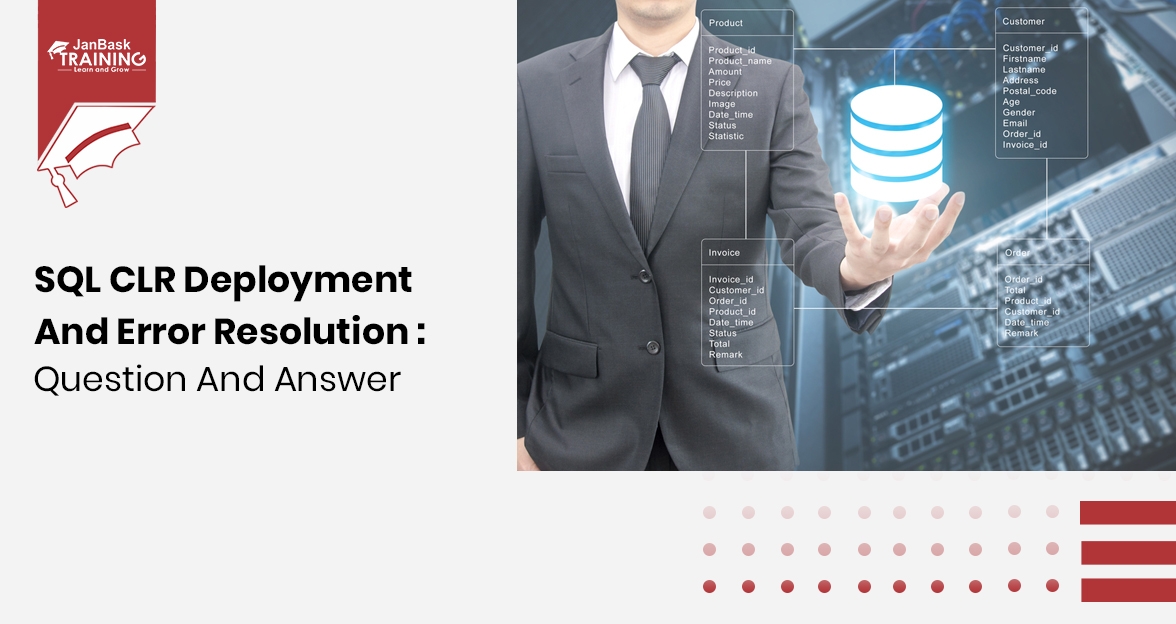 Grab Deal : Flat 30% off on live classes + 2 free self-paced courses - SCHEDULE CALL
Grab Deal : Flat 30% off on live classes + 2 free self-paced courses - SCHEDULE CALL

 Grab Deal : Flat 30% off on live classes + 2 free self-paced courses - SCHEDULE CALL
Grab Deal : Flat 30% off on live classes + 2 free self-paced courses - SCHEDULE CALL

Data is the lifeblood of decision-making, and the ability to deliver timely and relevant information to the right people is paramount. This is where data-driven subscriptions come into play, revolutionizing the way organizations distribute reports and insights. Whether you're a fresher looking to crack your upcoming SQL interview, a business analyst, a data professional, or an IT administrator, understanding the concept of data-driven subscriptions and their potential impact on your reporting process is essential. Check out the top ssrs interview questions and answers, and SQL training course to get going!
SQL Server Training & Certification

Ans: A data-driven subscription is a subscription to a report that uses dynamic or data-driven parameters to determine who receives the report and when it is delivered. A data-driven subscription is a feature of reporting and business intelligence tools like SQL Server Reporting Services (SSRS) that allows for the dynamic and automated distribution of reports to a large audience based on data-driven parameters and conditions. In essence, data-driven subscriptions enable organizations to tailor the delivery of reports to recipients by using data to determine who receives what information, when they receive it, and in what format.
Ans: A data source that supplies subscription data is necessary before you can define a data-driven subscription because the subscription data source provides the data that the report server needs to customize the report.
Ans: When the subscription is processed, the report server will obtain the subscription information from the data source and use it to modify the report presentation format, distribution options, and output.
Ans: Data-driven subscriptions are helpful for the following things:
Ans: The fixed components of a data-driven subscription are:
Ans: Certainly. In a retail company, data-driven subscriptions were used to distribute sales reports to individual store managers based on their store's performance. This improved accountability and allowed managers to take timely actions to boost sales.
Ans: No, multiple delivery options can be specified in a single data-driven subscription. As per the rules, only one delivery option can be specified in a single data-driven subscription.
Ans: No, the subscriber data source must be specified when the subscription is defined and cannot be changed dynamically at run time.
Ans: No, the query to select the subscriber data must be specified when the subscription is defined. It cannot be changed while the subscription is running.
Ans: Some examples of dynamic values that can be used in a data-driven subscription include:
Ans: Scheduling data-driven subscriptions can be done within reporting tools like SSRS. Important considerations include selecting appropriate delivery times, setting recurring schedules, and ensuring that the data source for parameters is updated to reflect changing conditions.
If you want to explore more about SQL, enroll in our sql server online training course that will help you land your dream job.
SQL Server Training & Certification

As you embark on your data-driven journey, keep in mind the potential of data-driven subscriptions to elevate your reporting game. Whether you are an analyst, a data professional, or an IT administrator, understanding how to leverage this tool can be the key to success in today's data-driven landscape. As you apply this knowledge and explore the possibilities within your organization, you'll discover that data-driven subscriptions are not just a feature; they are the cornerstone of data intelligence and informed decision-making. To sharpen your skills check out a job-oriented SQL certification course by JanBask Training.

SQL Server MERGE Statement: Question and Answer


Mastering INSERT and OVER DML Syntax: Interview Questions Guide

SQL CLR Deployment and Error Resolution: Question and Answer

Cyber Security

QA

Salesforce

Business Analyst

MS SQL Server

Data Science

DevOps

Hadoop

Python

Artificial Intelligence

Machine Learning

Tableau
Download Syllabus
Get Complete Course Syllabus
Enroll For Demo Class
It will take less than a minute
Tutorials
Interviews
You must be logged in to post a comment